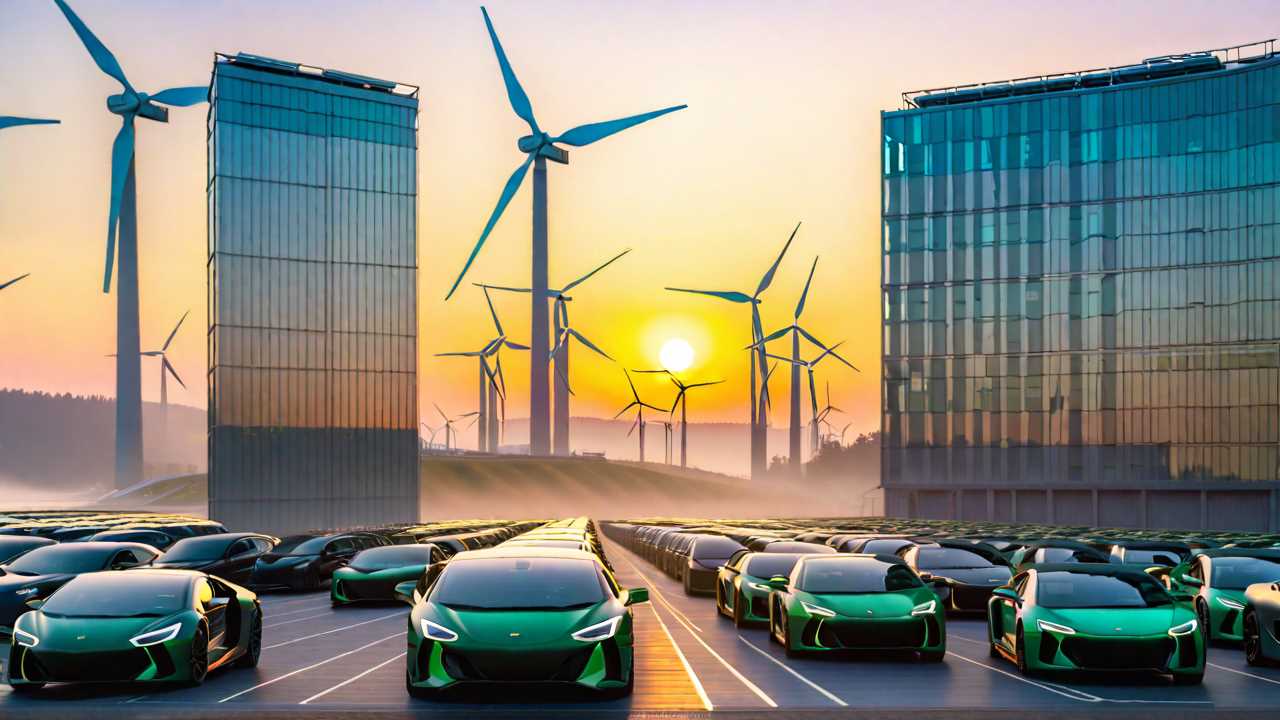Technology
What Are the Latest Advancements in Renewable Energy?
Perovskite solar cells are now exceeding 25% efficiency, marking a significant milestone in renewable energy advancements. These cells offer a cost-effective


With perovskite solar cells reaching record-breaking efficiencies of over 25%, the landscape of renewable energy is constantly evolving with cutting-edge advancements. From boosting wind turbine performance to transforming energy storage capabilities, the latest innovations in renewable energy are reshaping the way we power our world. Stay informed about the remarkable developments in solar panel technology, wind turbine advancements, energy storage breakthroughs, and bioenergy updates that are propelling us towards a more sustainable future.
Solar Panel Efficiency Enhancements
You can explore the latest advancements in solar panel efficiency improvements, elevating the renewable energy sector with increased productivity and sustainability.
One of the key innovations in solar panel technology is the development of perovskite solar cells. These cells have shown great promise due to their high efficiency levels and lower production costs compared to traditional silicon-based cells. By incorporating perovskite materials into solar panel design, researchers have been able to achieve efficiencies above 25%, a significant leap from previous models.
Another exciting advancement is the integration of bifacial solar panels. These panels can capture sunlight from both the front and back sides, increasing energy generation by up to 27%. By utilizing reflective surfaces or installing panels above light-colored ground cover, the efficiency of bifacial panels can be further improved. This technology not only boosts productivity but also allows for more flexibility in installation locations, making solar energy more accessible and widespread.
As these innovations continue to evolve, the future of solar energy looks brighter than ever.
Wind Turbine Technology Innovations
The domain of renewable energy expands its horizons with the latest advancements in wind turbine technology innovations. Wind turbine technology has seen significant progress in recent years, leading to more efficient and productive systems.
One notable innovation is the development of larger rotor diameters, capturing more wind energy and generating higher electricity outputs. These advancements have also led to the creation of taller turbines, taking advantage of stronger and more consistent winds available at higher altitudes.
Moreover, manufacturers are integrating advanced materials like carbon fiber into turbine blades, making them lighter, stronger, and more durable. This not only improves energy production but also reduces maintenance costs and extends the lifespan of the turbines.
Additionally, the incorporation of smart technology, such as sensors and data analytics, allows for real-time monitoring and optimization of wind turbines, maximizing their performance.
Energy Storage Breakthroughs
Significant progress in energy storage technologies has paved the way for groundbreaking advancements in the field of renewable energy. This advancement has transformed how renewable sources like solar and wind power can be harnessed effectively and stored for later use.
Energy storage advancements offer a multitude of benefits, such as:
- Enhanced Grid Stability: Advanced energy storage systems contribute to a more stable and reliable electrical grid, reducing the risk of power outages and enhancing overall grid efficiency.
- Increased Energy Independence: By storing excess energy generated during peak production times, individuals and communities can rely less on traditional fossil fuel-based power sources, promoting energy independence.
- Optimized Renewable Energy Integration: Energy storage solutions enable better integration of renewables into existing energy systems, facilitating a smoother transition towards a more sustainable energy landscape.
These advancements not only signify a step towards a greener future but also demonstrate the immense potential of energy storage in reshaping the renewable energy sector.
Bioenergy and Biomass Updates
Amidst the evolving landscape of renewable energy, bioenergy and biomass technologies continue to undergo significant advancements and refinements. The latest updates in bioenergy include the development of more efficient processes for converting organic materials into energy sources.
Innovations in biomass energy production have led to increased efficiency in generating electricity and heat from organic waste materials, such as agricultural residues and forestry by-products.
Researchers are focusing on enhancing the sustainability of bioenergy by exploring new feedstock options and improving conversion technologies. Advanced techniques like biomass gasification and pyrolysis are being refined to maximize energy output while minimizing environmental impact.
Moreover, the integration of bioenergy systems with carbon capture and storage technologies shows promise in reducing greenhouse gas emissions from energy production.
As bioenergy and biomass technologies continue to evolve, they offer a promising avenue for sustainable energy production and reducing reliance on fossil fuels. Embracing these advancements can contribute to a greener future and a more environmentally conscious energy sector.
Frequently Asked Questions
How Do Government Policies Impact Renewable Energy Adoption Rates?
Government policies play an essential role in shaping renewable energy adoption rates. By incentivizing clean energy initiatives and setting ambitious targets, policymakers can drive significant progress towards a more sustainable future. Their decisions pave the way for positive change.
What Are the Environmental Impacts of Renewable Energy Technologies?
When considering the environmental impacts of renewable energy technologies, it’s important to acknowledge their benefits like reduced greenhouse gas emissions and minimized air pollution. Embracing these advancements can lead to a cleaner, sustainable future.
Are There Any Potential Health Risks Associated With Renewable Energy?
Ever wondered about potential health risks linked to renewable energy? While generally safe, some concerns include noise pollution from wind farms or chemical exposure during manufacturing. Stay informed and address any specific worries proactively.
Can Renewable Energy Sources Be Used in Developing Countries?
In developing countries, renewable energy sources like solar and wind power can be essential for sustainable development. With proper investment and infrastructure, these clean energy options can provide affordable and reliable electricity, benefiting both the environment and economy.
How Do Advances in Renewable Energy Affect Job Creation in the Industry?
Advances in renewable energy are transforming job creation in the industry. By fostering innovation and efficiency, these advancements open up new opportunities for skilled workers, driving economic growth and sustainability in the sector.


Hello! I’m Roger Jenkins, your go-to source at ReportingTheNews.com. I’m a USC graduate who combines journalistic precision with a Trojan’s passion. Based in sunny Los Angeles, my days are filled with more than just sunshine; they’re about capturing stories that resonate.
Beyond the newsroom, I’m an avid triathlete. Swimming, cycling, and running are more than just sports to me; they embody my commitment to discipline, focus, and a healthy dose of competition.
My love for travel takes me far and wide. Guadalajara, with its vibrant culture and unforgettable tacos, has a special place in my heart. I’m always searching for the next great story or a hidden culinary treasure.
At home, Nala, my energetic pet, is my constant companion. Together, we’re known in our neighborhood for our morning runs and evening strolls.
I’m driven by a belief in the power of storytelling to unite communities. Join me as we explore impactful narratives and stay updated with the latest news. You’ll also get a peek into my sports passions and travel escapades.
Want to get in touch? Follow me on Instagram for more insights and updates.

